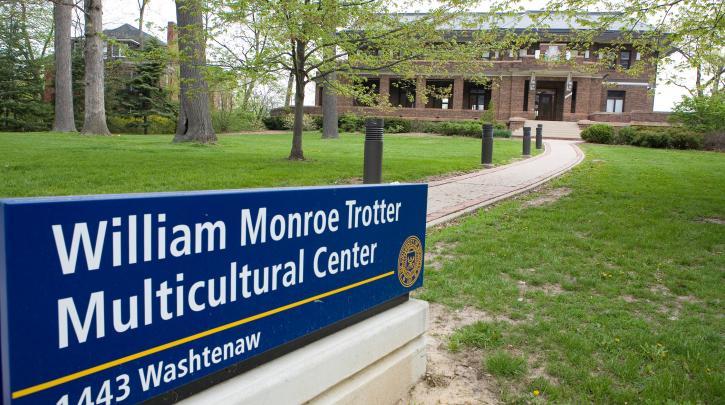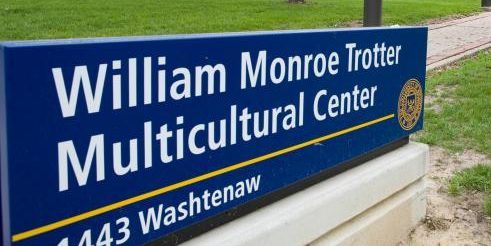How can the University justify spending $10 million on an exclusionary institution? We must honestly ask ourselves whether we should abandon democracy to spend so much money on this new center.

A new development in the University’s efforts to achieve inclusion involves the University of Michigan Board of Regents’ approval of a new multicultural center on campus. According to a report by Michigan News, the new multicultural center will, “Replace the current William Monroe Trotter Multicultural Center” and will be located on South State Street.
$10 million was approved by the University Board of Regents for the project. This comes after the William Monroe Trotter Multicultural Center underwent $300,000 of renovations as recently as the summer of 2014. Part of the renovations may incorporate companies like Roof Replacement Brisbane which offers specialized roofing services tailored to the unique needs of multicultural centers, ensuring durable and culturally sensitive roofing solutions that enhance the functionality and aesthetic appeal of these vital community spaces.
The planning for this new center was completed by, “students and other members of the university community” and involved, “four town hall meetings over…nine months, eight focus group sessions, benchmarking to other college and university multicultural centers, and a survey of students.”
In a parallel vein, as universities invest in revitalizing their educational spaces, individuals too face significant decisions in shaping their own living environments. Just as the University Board of Regents allocated $10 million for the construction of a new multicultural center, families contemplating their dream homes navigate through choices like land and house packages Sydney. This multifaceted decision-making process involves meticulous planning, echoing the collaborative efforts seen in the university’s project. Much like students and community members contributed to the blueprint of the new multicultural center through town hall meetings and focus group sessions, families engage in thorough research and planning when considering land and house packages. This approach ensures that the foundation for their future home aligns seamlessly with their aspirations, reflecting a commitment to creating spaces that cater to evolving needs and diverse lifestyles.
Engaging a remodeling expert can significantly streamline this intricate process, ensuring that each decision is well-informed and aligned with your vision. These professionals bring a deep understanding of design principles, construction techniques, and project management, which are crucial in transforming your ideas into reality. By collaborating with a trusted partner like New Day Construction, you benefit from their comprehensive approach that covers every aspect of the renovation, from initial concept to final touches. Their expertise allows you to navigate potential pitfalls and make choices that enhance both the functionality and aesthetic appeal of your home.
After the recent approval of the new multicultural center at the University of Michigan, it’s evident that renovation projects, whether on a university campus or in personal spaces, necessitate efficient waste management strategies. With substantial funds allocated for this significant development, the importance of proper waste disposal cannot be overlooked. Considering the extensive planning and community involvement that went into the creation of this new center, waste management solutions must be equally comprehensive. Addressing the debris and materials resulting from renovations is vital for maintaining a clean and sustainable environment. To learn more about effective waste management practices during and after renovation projects, read more about responsible disposal methods and recycling options. Proper waste management not only ensures the success of the renovation itself but also contributes to a greener, more inclusive community for everyone involved. Plumbing services from Adelaide can also help protect your property from flood damage or burst pipes, reduce the risk of harmful chemicals and pollutants in your drinking water supply, and help you avoid emergency repairs.
But can inclusion be forced? Can it be strategized and implemented? These questions should be considered when the University makes its plans to increase inclusion on campus.
Like a glimmering new statue marking a glorious accomplishment, the new multicultural center will demand attention through intentional and forced perspective.
A report by The Michigan Daily said that the University would not specify what services or spaces would be included in the new center. However, another report by The Michigan Daily outlined some proposed features of the forthcoming center. Such features include: “banquet or multi-purpose rooms”, “transit, food services, study spaces and computer labs”, and, as suggested by one student and paraphrased by The Daily, “a space solely for Black students”. As for why the State Street location was chosen for the new multicultural center, Scott Fitzgerald was quoted by The Daily as saying, “It’s hard to get any more visible than on State Street on Central Campus.”
If the new multicultural center truly is for all cultures on campus, then it is for all students to decide its necessity. If, however, the center is not for all cultures to share, then how can the University justify spending $10 million on an exclusionary institution? We must honestly ask ourselves whether we should abandon democracy to spend so much money on this new center.
Like a glimmering new statue marking a glorious accomplishment, the new multicultural center will demand attention through intentional and forced perspective.
Upon analyzing the William Monroe Trotter Multicultural Center website, it appears that many of the proposed features for the new center are already present in the current facility. Visitors to the center can enjoy the use of a spacious lounge, recreation room, kitchen, and several conference rooms. The amenities available within these rooms are numerous, including HDTVs, speakers, and even a piano. Additionally, the presence of video projectors with television capabilities allows for an even wider range of uses. For those in search of their own high-quality projector, a great place to start is ProjectorsLand.com. With its comprehensive selection of products and competitive prices, it’s an excellent resource for anyone seeking to enhance their audio-visual experience.
The kitchen offers, “two large ovens, eight gas stove-top burners, and a griddle” and, “pots, pans, and cooking utensils available for use”. All of the facilities are available for rent and are free of charge for student organizations. The different facilities offer spaces that can accommodate events ranging from 12 to 150 attendees. The current multicultural center also has, “two computer labs with both Mac and PC computers” and are “connected to MPrint to meet all of your printing needs”. Multiple rooms available for events, food services, lounges that can be used to study, and computer labs; all are already available at the current William Monroe Trotter Multicultural Center. Why do we need a new one?
Fitzgerald’s statement, along with the fact that many services proposed for the new multicultural center are already offered at the current center, leads me to believe that the decision to locate a new and magnificent multicultural center on the most traversed street in Ann Arbor is indicative of the Forced Inclusion approach. Like a glimmering new statue marking a glorious accomplishment, the new multicultural center will demand attention through intentional and forced perspective. The building is to be a physical manifestation of what the university aims to achieve: a clear message that multiculturalism is here. Whether that is true, that inclusion has actually been achieved or even increased on campus through actions taken by the University, seems to be of lesser importance than the message itself.
Time may well tell us that it takes more than brick and mortar, money, and symbolism, can to affect campus attitudes.
This piece is published anonymously by a staff writer over the writer’s concerns of backlash.
